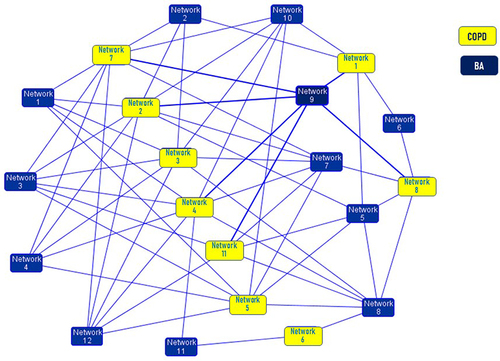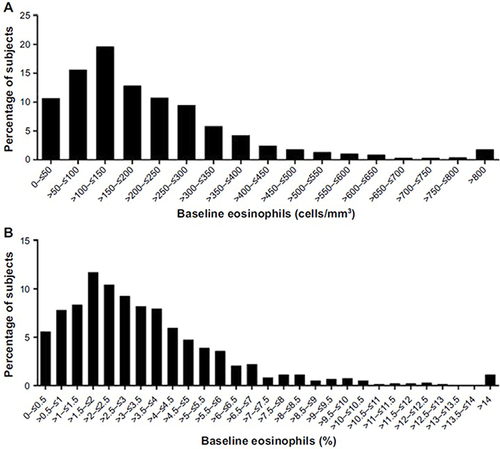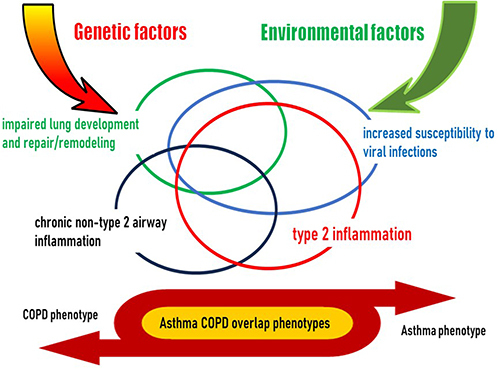Figures & data
Figure 1 Overlapping networks between asthma and COPD. The Ingenuity Pathway Analysis software program identified 229 overlapping molecules between 12 asthma networks and 11 COPD networks, and merged them into a single larger network. In total, 229 genes were common to both diseases, and 190 and 91 genes were unique to asthma and COPD, respectively. Each network is represented by a colored rectangle, and is labeled with its corresponding network number. Adapted with permission from Dove Medical Press. Kaneko Y, Yatagai Y, Yamada H, et al. The search for common pathways underlying asthma and COPD. Int J Chron Obstruct Pulmon Dis. 2013;8:65–78.Citation8

Figure 2 The distribution of blood eosinophil levels in a Japanese COPD clinical trial database. Distribution of (A) absolute blood eosinophil count and (B) percentage blood eosinophils among Japanese patients with COPD. Reprinted with permission from Dove Medical Press. Barnes N, Ishii T, Hizawa N, et al. The distribution of blood eosinophil levels in a Japanese COPD clinical trial database and in the rest of the world. Int J Chron Obstruct Pulmon Dis. 2018;13:433–440.Citation23

Figure 3 Approach to COPD treatment based on the degree of airflow obstruction and peripheral blood eosinophil counts. This proposal for positioning ICSs and bronchodilators for the treatment of COPD in clinical practice follows a personalized medicine approach that is not based on the stratification of patients into subgroups, but rather is based on individual characteristics that consider the heterogeneity and complexity of the disease in patients. Reprinted with permission from Dove Medical Press. Hizawa N. LAMA/LABA vs ICS/LABA in the treatment of COPD in Japan based on the disease phenotypes. Int J Chron Obstruct Pulmon Dis. 2015;10:1093–1102.Citation55

Figure 4 Common endotypes underlying asthma and COPD. Asthma and COPD are syndromes caused by complex interactions between individual genetic factors and various environmental factors. At any given time, the interaction of multiple endotypes drives individual patient pathologies and phenotypes.

